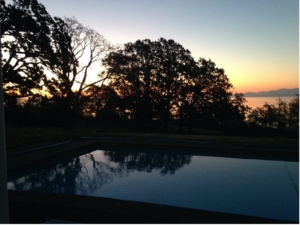Swanwick Star Issue No. 14 (2021)
Self-Inquiry and Nonduality
Self Inquiry and Nonduality
with Hillary Rodrigues, August 27 – 29, 2021
Zoom workshop
A long-time contributor and friend of the Krishnamurti Centre, Hillary was welcomed back to present a three day online workshop exploring the teachings of J. Krishnamurti in contrast to modern and ancient nondual teachings which have been attracting a great deal of interest in recent years. Sixteen people were in attendance for the event.
Hillary began with the essential issue he wanted to consider with us: the possibility of having a transformative realization that is more real and experiential than mere knowledge, which has its own place. Over the three sessions of 1 ½ hours he went into the history of nondual teachings such as Advaita Vedanta and the Upanishads in the Hindu tradition, including the teachings of Shankara, Buddhist teachings such as Zen, and modern offshoots such as Ramana Maharshi and current teachers such as Rupert Spira and Adyashanti.
He then led an investigation of Krishnamurti’s teachings along similar lines and where there were at least apparent differences and emphases. Along the way we touched on various questions of identity, knowledge, and awareness,as well as some of the paradoxes that arise as the mind attempts to understand something which essentially cannot be grasped through thought. When asked to guess at the source of a number of quotes from different spiritual teachings it became apparent that it is in many cases difficult to distinguish between them.
When it came to looking at Krishnamurti’s expression of self-inquiry, we spent some time exploring his approach to being with pain and suffering. K gives great emphasis on not moving away from our suffering and not creating a duality between the observer and the observed or the “me” and the “other”. It is our movement away from “what is” that is the problem in that it creates a duality which results in conflict. When we stay with “what is”, it changes. This change leaves no residue and there is a transformation.
These ideas were explored, sometimes very seriously and sometimes with a sense of humor and lightness which did not detract from the depth of the inquiry and the resulting sense of freedom and uncaused joy felt by some. Hillary’s integration of academic skillfulness and logic, along with his depth of direct realization of that which he speaks, created a space where it was possible to touch at least a somewhat different dimension of consciousness. We are grateful for his ongoing participation in the life of the Krishnamurti Educational Centre of Canada.
DB


